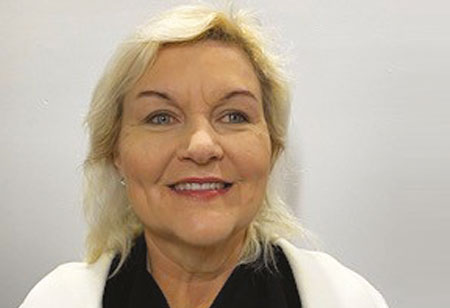THANK YOU FOR SUBSCRIBING

New Risk Exposures Facing Insurers Tackling Climate Change
Alison Cameron, Head of Governance, Risk & Compliance, YOUI Insurance

 Alison Cameron, Head of Governance, Risk & Compliance, YOUI Insurance
Alison Cameron, Head of Governance, Risk & Compliance, YOUI InsuranceFinancial impacts from environmental changes over the last five years have been a wake-up call for both regulators and the financial services industry, particularly insurance. Climate change has now become the leading strategic risk organizations face. This is due to the breadth of risks and impacts environmental changes create. In 2021 APRA developed a guide on understanding and managing the financial risks of climate change (CPG 229) with the promise of more supervisory attention to understanding the full risks and deeper supervisory assessments. Whilst the information was gained from industry surveys and the financial vulnerability assessments, emerging environmental risks were progressing at a rate that far exceeded most requirements or mitigation actions.
This has led organizations to focus on Environmental, Social Governance, and ESG policies and strategies.
What Do We Know So Far?
Environmental, Social Governance (ESG) refers to frameworks in place for organizations to manage risks and opportunities related to environmental, social and governance criteria. It should be considered as part of a holistic sustainability strategy. ESG is commonly used for investment and capital allocation decisions, as a company’s corporate policies relating to addressing climate change, community relationships and ethical practices, plus internal controls and audits.
Organizations can determine their ESG risk through an ESG risk score. This measures the level of exposure to environmental, social and governance risks. Most commonly, a 100-point scale is used to rate the company’s ability to balance its financial performance against sustainability risks.
ESG has three risk categories:
Environmental risks: Impact on the environment such as Carbon footprint; Waste management; Water usage
Social risks: Ethical practices and the company’s relationships with stakeholders. For example, impacts on communities in which it operates and supply chains, labour practices, equality, and diversity
Governance risks: Decision making and governing policies. How a company communicates to shareholders and stakeholders; structures, ESG disclosures.
Addressing Climate Change Risks
To develop a risk management strategy to address Climate change risks, it is important to consider the broader context of environmental and sustainability risks, so they can be assessed against the organizational risk profile. Climate-related financial risks can be broken down into the following:
● Physical risk: This looks at the changing climate conditions and direct impacts
● Transition risk: Innovation from technology and social adaptation within the economy
● Liability risk: Defined as the risk of no action and regulatory enforcement
Organizations that have already developed ESG frameworks and climate risk working groups may have implemented targets. This can be effective in developing measures and monitoring actions. For instance, companies who are looking to support low–carbon economies with set targets can conduct audits to demonstrate tracking and improvement activities.
" To develop an effective strategy, it is critical to have a full understanding of the company’s current status and identify exposures "
Physical risks can be further described as natural peril events, sea level and temperature impacts. Transition risks focus more on policy and legal requirements (emissions reporting or cost to transition to lower emissions; carbon tax), technology, supply chain and reputational damage. Liability risk is the cost of exposure to fines or regulatory enforcement actions or losses suffered as part of inaction.
Plan of Action
To develop an effective strategy, it is critical to have a full understanding of the company’s current status and identify exposures. A climate risk assessment will evaluate organizational readiness and awareness of climate-related risks and build the foundation for effective climate risk management.
Below is a climate risk assessment tool: l:
 Current state analysis and capacity analysis should use a participatory approach to identify key data gaps and raise awareness of climate and environmental risks among stakeholders.
Current state analysis and capacity analysis should use a participatory approach to identify key data gaps and raise awareness of climate and environmental risks among stakeholders.
To develop the methodology and qualitative and quantitative risk assessment, utilize impact chains to understand cause and effect relationships.
Understand your organization’s risk appetite and tolerance levels to identify CRM options.
In the final step, feasibility options should look at a combination of measures that address all the identified risk tolerance levels, including residual risks which cannot be averted.
Conclusion
It is not appropriate for organisations to rely on regulatory or government enforcement to address climate change risk management. Continued financial pressures, investment preference, and societal awareness means companies must actively engage in ESG risk management to remain sustainable.
Climate change risk management is a key component of the broader ESG risks. The growth opportunities and reduction in costs unlocked by effective risk management of environmental risks ensure companies can position themselves as sustainable entities with better investment opportunities.
Alison Cameron is a Governance, Risk and Compliance executive with qualifications in Environmental Management. She has considerable experience in carbon auditing and ESG risk frameworks.
Read Also






















ON THE DECK